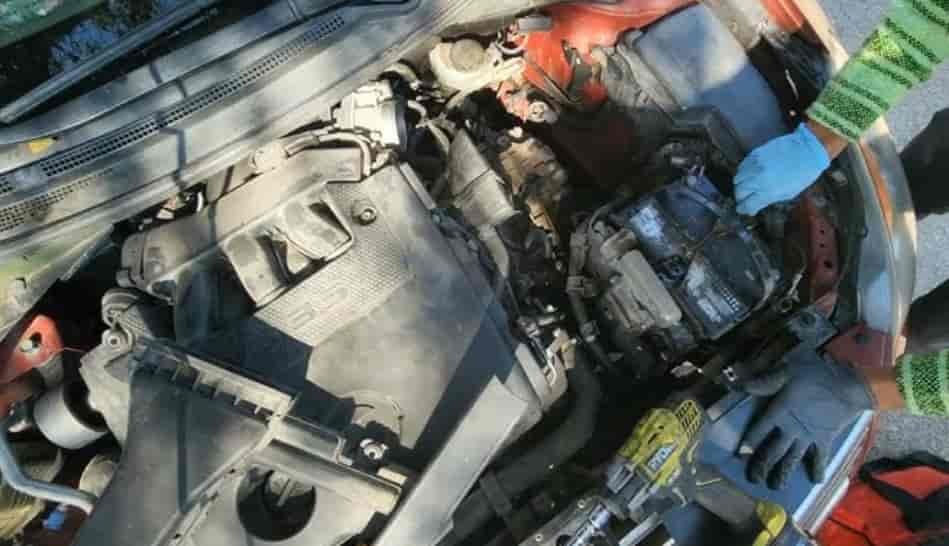If you have ever popped the hood of your 2008 Nissan Altima and wondered where the starter is hiding, you are not alone. The starter is one of those essential components that does all the heavy lifting every time you turn the key, yet its location can be surprisingly tricky to find. Because the 2008 Altima comes with both 2.5L and 3.5L engine options, the exact placement of the starter varies slightly, which often causes confusion for DIY mechanics.
This complete location guide will help you pinpoint exactly where the starter sits on your Altima, whether you are troubleshooting a no-start issue or planning a replacement. You will learn how to visually identify it, understand its connection to the transmission housing, and recognize signs of a failing starter before it leaves you stranded.
By the end of this article, you will know how to access the starter safely, the tools you will need, and the small differences between engine versions. This information is based on verified OEM schematics and real mechanic experience so you can approach your repair confidently and save time on unnecessary guesswork.
Understanding the Starter’s Role in Your Nissan Altima
Before locating the starter on your 2008 Nissan Altima, it helps to understand what this component actually does. The starter motor is responsible for initiating the engine’s operation every time you turn the ignition key or press the start button. It converts electrical energy from the car’s battery into mechanical energy that rotates the engine’s flywheel, which begins the combustion process.
The starter assembly is made up of three primary parts: the starter motor itself, a solenoid that engages the flywheel, and a gear mechanism that transfers rotation. When you start the car, power flows from the battery to the solenoid, which then pushes the starter gear forward to mesh with the flywheel teeth. Once the engine fires, the starter disengages automatically to prevent damage.
Because the starter connects directly to both the battery and the transmission housing, it is typically mounted low on the engine block where the two systems meet. This position allows it to transfer torque efficiently but also makes it less visible from above, which explains why many Altima owners have trouble finding it at first glance.
Starter Location on the 2008 Nissan Altima (2.5L Engine)
For the 2008 Nissan Altima equipped with the 2.5L QR25DE engine, the starter is located on the lower front side of the engine near the point where it meets the transmission housing. It sits just below the intake manifold and can be accessed most easily from underneath the vehicle. Because of its low placement and the number of components around it, spotting the starter from above the engine bay is nearly impossible without removing other parts first.
To locate it safely, begin by parking your Altima on a flat surface and disconnecting the negative battery terminal to avoid electrical shock. Then raise the vehicle with a jack and secure it with stands for stability. From underneath, remove the front splash shield to expose the lower part of the engine. Once the cover is off, look toward the front of the transmission housing, slightly behind the radiator line. You will see a cylindrical metal component about six to eight inches long with one thick cable running from the battery and a smaller wire attached to its solenoid. That is your starter motor.
A quick inspection may reveal any corrosion or loose connections that could prevent the car from starting properly.
Starter Location on the 2008 Nissan Altima (3.5L Engine)
For the 2008 Nissan Altima with the 3.5L VQ35DE engine, locating the starter is usually simpler than on the 2.5L version. In this engine, the starter sits toward the front of the vehicle, near the radiator side, and slightly above the oil filter area. It is mounted at the point where the engine and transmission connect, but it is positioned higher, making it easier to spot once the air intake duct is removed.
To find it, start by disconnecting the negative battery cable to prevent any electrical hazards. Remove the intake duct or air box assembly connected to the throttle body. After this part is out of the way, look toward the front lower section of the engine. You will notice a metal cylindrical component with two wires attached, one thick cable coming from the battery and another smaller wire connecting to the solenoid. That is the starter motor.
Many owners mistakenly identify the alternator as the starter because they sit in similar areas. The alternator has a visible pulley and belt system, while the starter does not. Paying attention to this difference helps ensure you are working on the correct component when diagnosing a starting problem.
How to Visually Identify the Starter
Recognizing the starter on your 2008 Nissan Altima is quite straightforward once you know what to look for. The starter motor has a compact cylindrical shape, typically six to eight inches long, and is made of durable metal with a slightly rounded body. It is bolted directly to the transmission housing because it needs to engage with the flywheel every time you start the car.
When inspecting the area, you will see two clear electrical connections. The first is a thick power cable that runs directly from the car’s battery, and the second is a thinner control wire attached to the solenoid. These wires are reliable visual clues that help confirm you are looking at the correct component.
The starter is usually free of moving belts or pulleys, which distinguishes it from the alternator or air conditioning compressor nearby. In good lighting, you might also notice the manufacturer label or part number stamped on the metal housing. Using a flashlight or inspection mirror will make it easier to locate these details, especially if the starter is partially hidden behind other components.
Tips Before Accessing or Removing the Starter
Before you begin working on the starter of your 2008 Nissan Altima, there are several important safety and preparation steps you should follow. First, always disconnect the negative battery terminal to prevent electrical shock or short circuits. The starter handles high current from the battery, so any accidental contact could cause sparks or damage.
Allow the engine to cool completely before you begin. The starter is mounted close to other metal components that can become extremely hot after driving. Wearing protective gloves and using a proper socket wrench set will also make the process smoother and safer.
If you are working underneath the car, make sure it is parked on a level surface and supported securely by jack stands. Never rely on a hydraulic jack alone. Use a bright flashlight to illuminate the lower part of the engine and identify the mounting bolts clearly before loosening them.
Finally, take a moment to inspect the surrounding area for wiring harnesses, sensors, or hoses that could be accidentally disturbed during the process. Working carefully and methodically helps prevent unnecessary damage and ensures the new or existing starter functions properly once reinstalled.
Common Signs That Indicate Starter Problems
Knowing the warning signs of a failing starter can save you from being stranded with a car that will not start. On the 2008 Nissan Altima, starter issues often show up through a few recognizable symptoms. The most common is a clicking sound when you turn the ignition key or press the start button. This usually means the solenoid is trying to engage but the starter motor itself is not turning the engine.
Another sign is a slow or hesitant crank. If your engine turns over sluggishly even when the battery is fully charged, the starter motor may be wearing out or suffering from internal corrosion. Sometimes, the engine will not crank at all while all the dashboard lights still come on. That can indicate a broken connection, a worn-out solenoid, or a completely dead starter.
Burning smells or visible smoke from the lower engine area can also point to an overheating starter caused by repeated failed attempts to start the car. Before replacing the starter, always check the battery terminals, ground cables, and starter relay, as these can mimic similar symptoms. A careful diagnosis ensures you fix the actual problem instead of replacing parts unnecessarily.
Conclusion
Locating the starter on your 2008 Nissan Altima becomes much simpler once you understand how it connects to the rest of the engine system. For the 2.5L engine, it sits lower beneath the intake manifold near the transmission housing, while for the 3.5L version, it is positioned higher at the front of the engine close to the radiator and above the oil filter. Knowing these differences saves valuable time and helps you avoid unnecessary part removal.
The starter is an essential component that brings your Altima to life every time you turn the key. Learning how to identify it, access it safely, and recognize early signs of failure gives you the confidence to maintain your vehicle more effectively. If you notice clicking noises, slow cranking, or a complete lack of response when starting your car, it is worth inspecting this part first.
If you prefer not to perform the inspection yourself, a certified mechanic can confirm the issue and provide an accurate repair cost. Either way, understanding the starter’s location and purpose empowers you as a car owner to handle common problems before they turn into major repairs.

